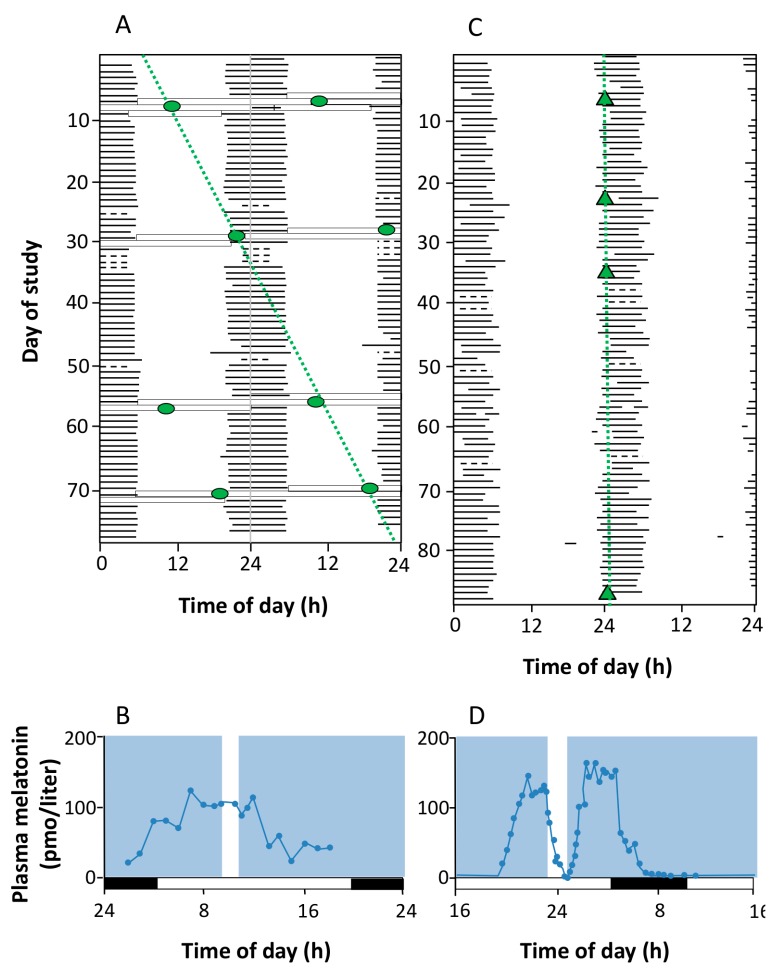Figure 3.
Absence and presence of circadian photoreception in two totally blind subjects. A and B correspond to the sleep-wake pattern and the results of melatonin suppression test in a 70-year old blind patient with congenital glaucoma who reported no conscious light perception and whose electroretinogram (ERG) and visually evoked potential (VEP) responses were not detectable. In (A), the sleep-wake pattern is double-plotted according to time of day (abscissa) and study day (ordinate). It is evident that the subject’s circadian system was not entrained to the light-dark cycle, and the core body temperature rhythm (circle) exhibited a non-24-h period; (B) shows the null effect of light (white bar) on melatonin secretion; C and D correspond to a 21-year-old woman with Leber’s congenital amaurosis, a type of retinal dystrophy. The ERG was undetectable, but an abnormal VEP was recorded. As represented in C, her circadian system was normally entrained (24-h period) and melatonin secretion was suppressed when she was exposed to light. Both results indicated that this patient, despite her lack of conscious light perception, preserved the retina-SCN-pineal pathway (reproduced from [122]).

